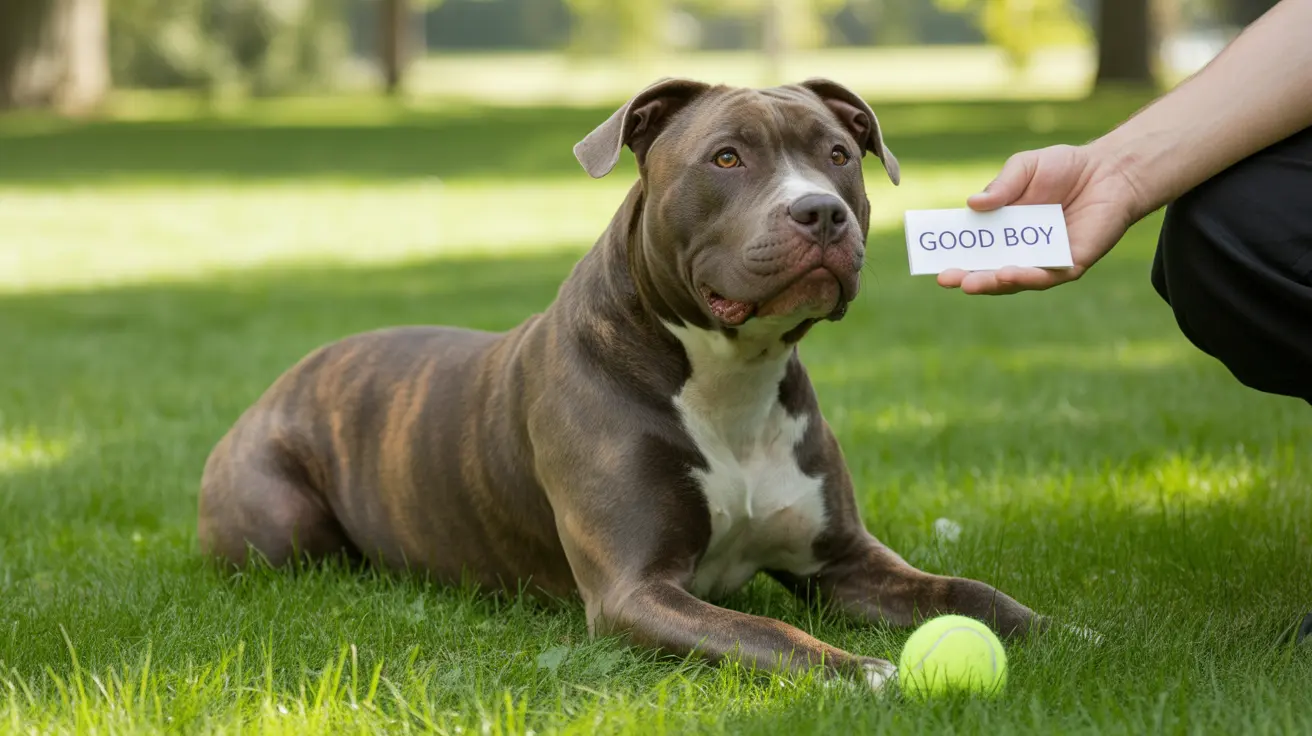Introduction
Pitbulls are intelligent, energetic, and loyal dogs that respond exceptionally well to structured training. Whether you're starting with a puppy or working with an adult dog, understanding the right approach to training a pitbull can make all the difference in developing a well-mannered and sociable companion.
In this comprehensive guide, we'll explore proven techniques and strategies for training your pitbull effectively, focusing on positive reinforcement methods that build trust and strengthen the bond between you and your dog.
Understanding Pitbull Psychology
Before diving into training techniques, it's crucial to understand that pitbulls are naturally eager to please and highly responsive to positive reinforcement. Their intelligence and determination make them excellent students, but these same traits require consistent, clear communication from their handlers.
These dogs thrive on structure and routine, making it essential to establish clear boundaries and expectations early in the training process. Their strong work ethic and desire for human interaction create an excellent foundation for successful training.
Establishing Basic Obedience
Start with fundamental commands that form the cornerstone of good behavior. Focus on teaching:
- Sit
- Stay
- Come
- Down
- Leave it
- Heel
Keep training sessions short (10-15 minutes) but frequent, using high-value treats and enthusiastic praise as rewards. Consistency is key – use the same commands and reward system across all family members involved in training.
Socialization: The Foundation of Good Behavior
Early socialization is crucial for pitbulls. Expose your dog to various situations, people, and environments during their formative weeks and months. This includes:
- Different types of people (ages, sizes, ethnicities)
- Various environments (parks, streets, stores)
- Different sounds and situations
- Other animals (when appropriate and supervised)
Positive experiences during socialization help prevent fear-based behaviors and build confidence in your pitbull.
Exercise and Mental Stimulation
A tired pitbull is typically a well-behaved pitbull. These energetic dogs require:
- 30-45 minutes of vigorous exercise daily
- Interactive play sessions
- Mental stimulation through puzzle toys and training games
- Structured activities like agility or nose work
Leash Training and Impulse Control
Given their strength, proper leash training is essential for pitbulls. Use front-clip harnesses or head halters for better control during training. Teach impulse control through:
- Wait commands before meals
- Door manners
- Loose leash walking exercises
- "Leave it" training with increasing distractions
Advanced Training Techniques
Once your pitbull masters the basics, move on to more complex training:
- Distance control
- Off-leash reliability (in safe areas)
- Advanced tricks and commands
- Agility or sport-specific training
Frequently Asked Questions
How do I start training my pitbull puppy using positive reinforcement methods?
Start with short, engaging sessions using high-value treats and lots of praise. Focus on one command at a time, rewarding your puppy immediately when they perform the desired behavior. Keep sessions fun and end on a positive note.
What are the most important commands to teach a pitbull for obedience and impulse control?
The essential commands include sit, stay, come, leave it, and heel. Focus on mastering these basic commands before moving to more advanced training. Consistent practice of these commands builds impulse control naturally.
How can I effectively socialize my pitbull to prevent aggression and fearfulness?
Begin socialization early, exposing your pitbull to various people, animals, and environments in a controlled, positive manner. Use treats and praise to create positive associations, and never force interactions that make your dog uncomfortable.
What are the best techniques for leash training a strong and energetic pitbull?
Use a front-clip harness or head halter, and practice the "stop and wait" technique when your dog pulls. Reward loose leash walking consistently, and gradually increase the difficulty of walking environments as your dog improves.
How much exercise and mental stimulation does a pitbull need for balanced behavior?
Pitbulls need at least 30-45 minutes of vigorous exercise daily, combined with mental stimulation through training, puzzle toys, and interactive play. Regular exercise helps prevent destructive behaviors and promotes better focus during training sessions.
Remember, every pitbull is unique, and training should be tailored to your dog's individual personality and needs. With patience, consistency, and positive reinforcement, you can help your pitbull become a well-behaved and cherished family member.






